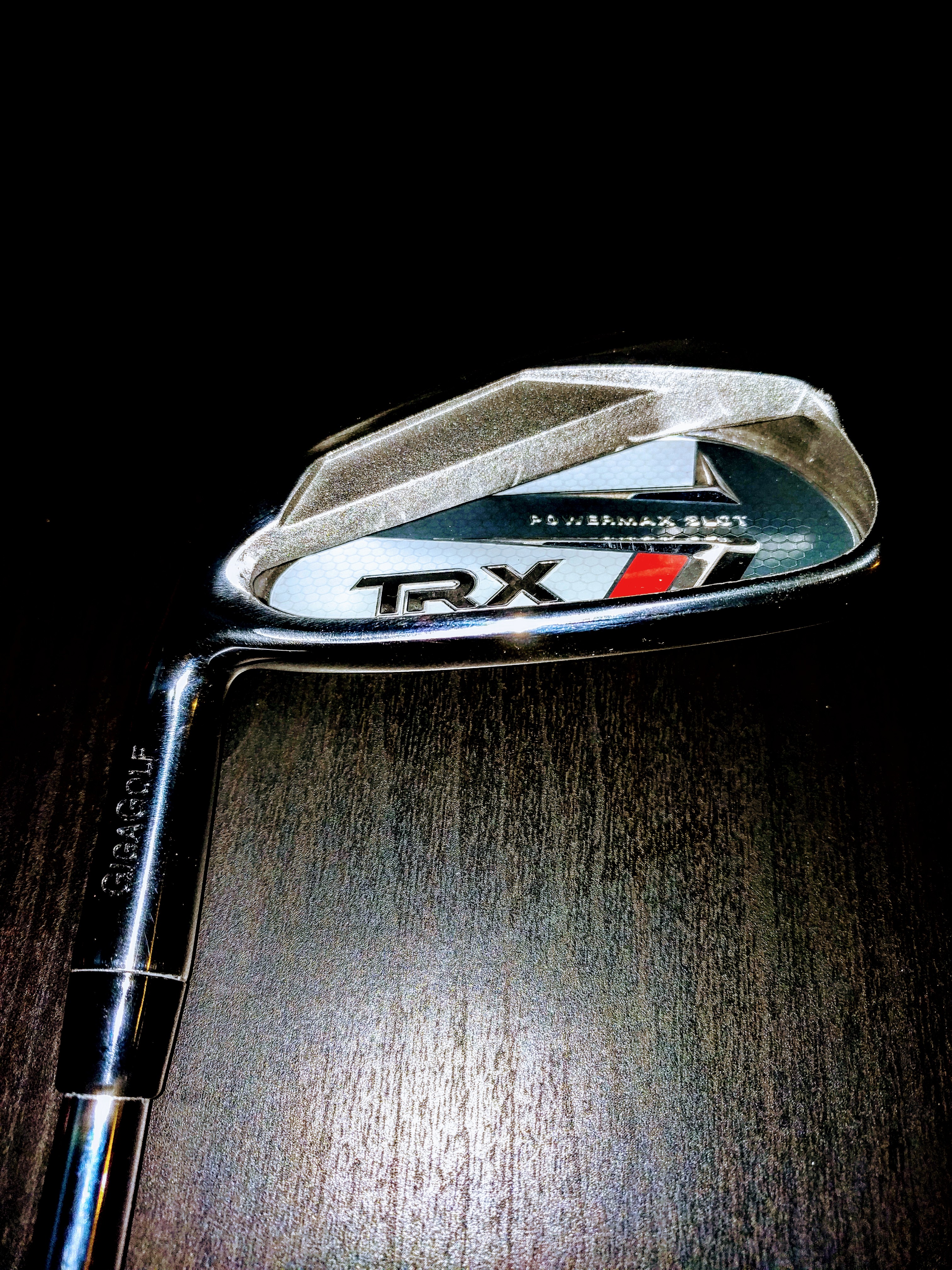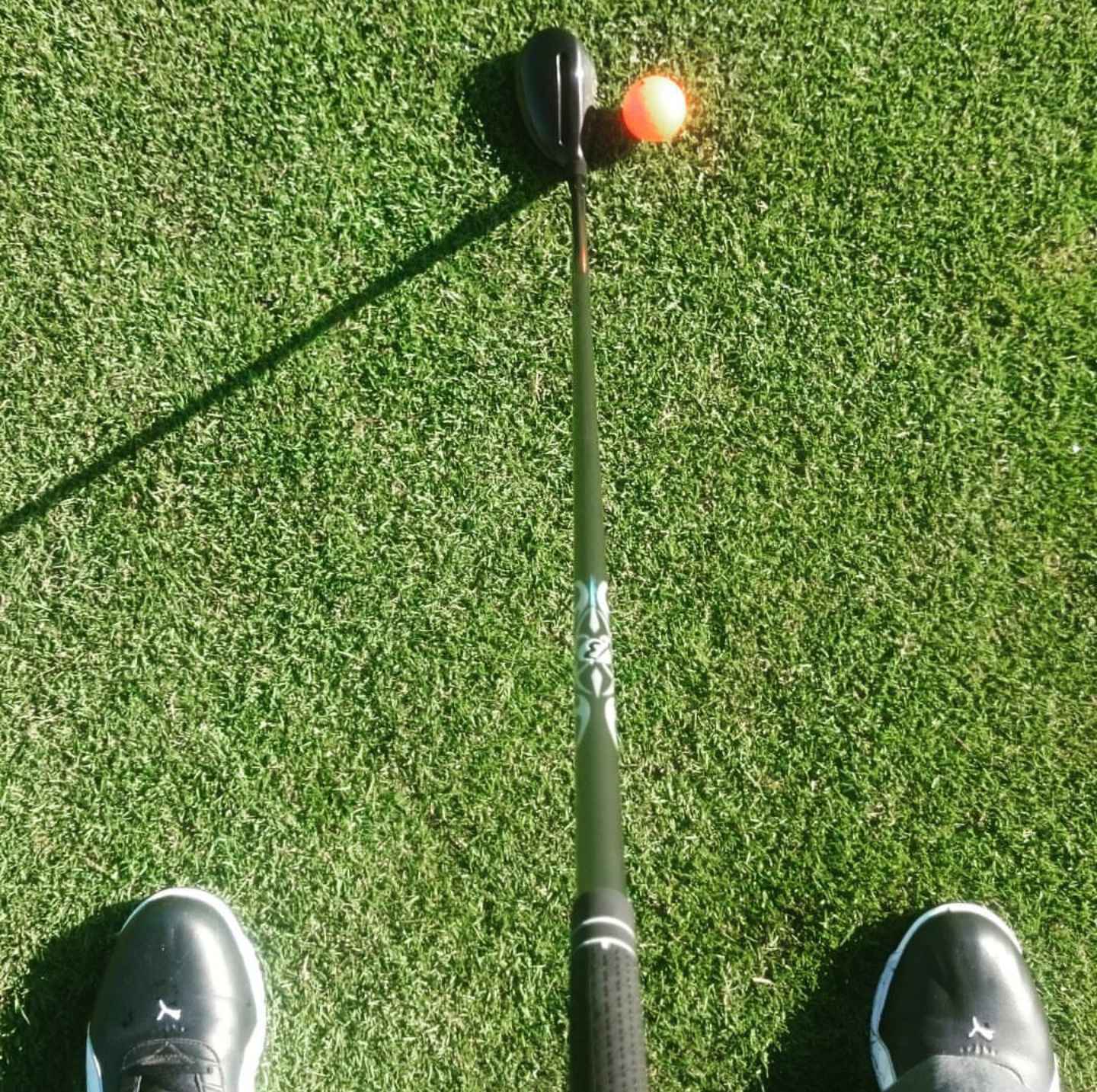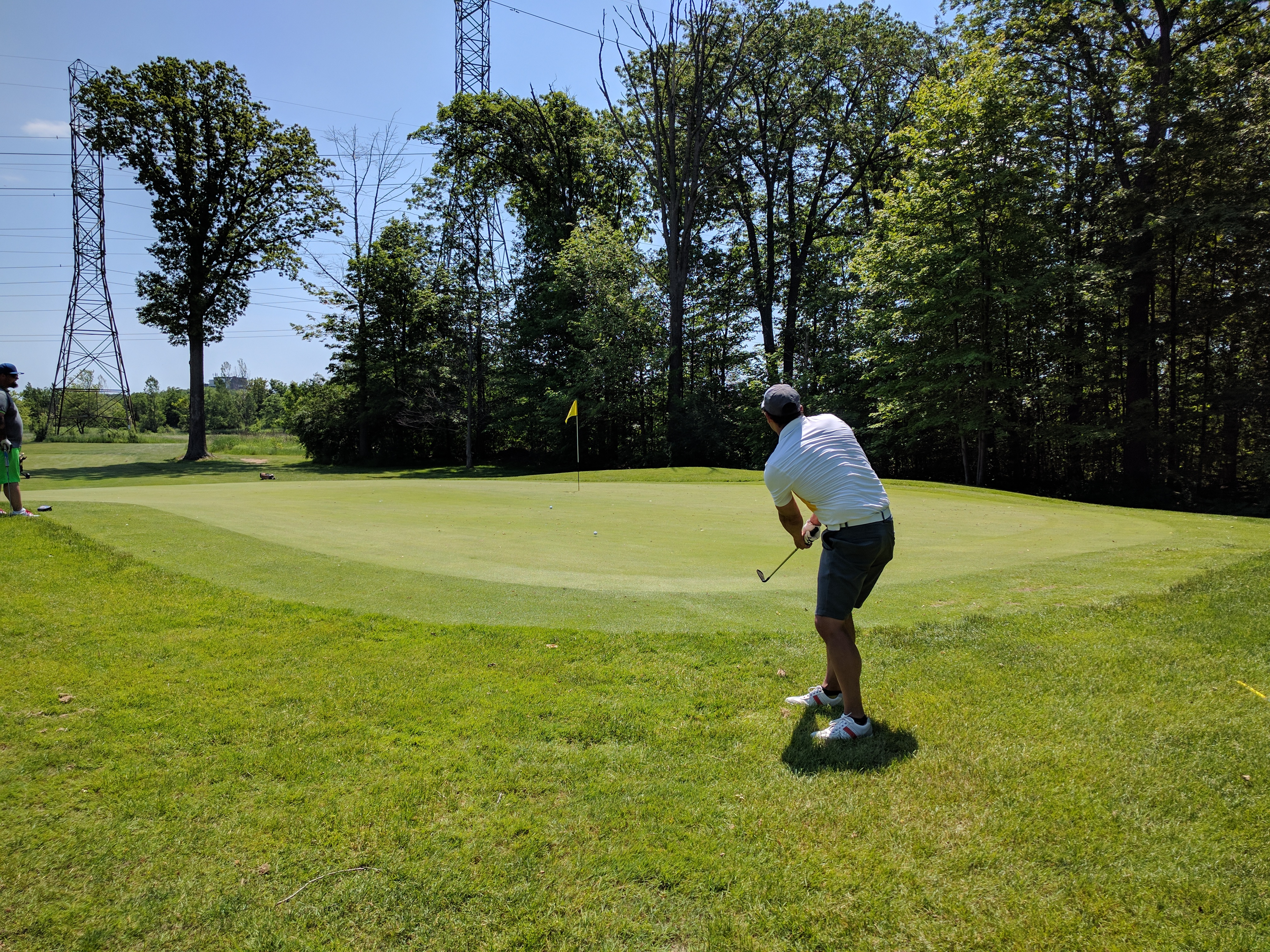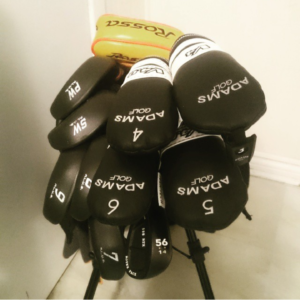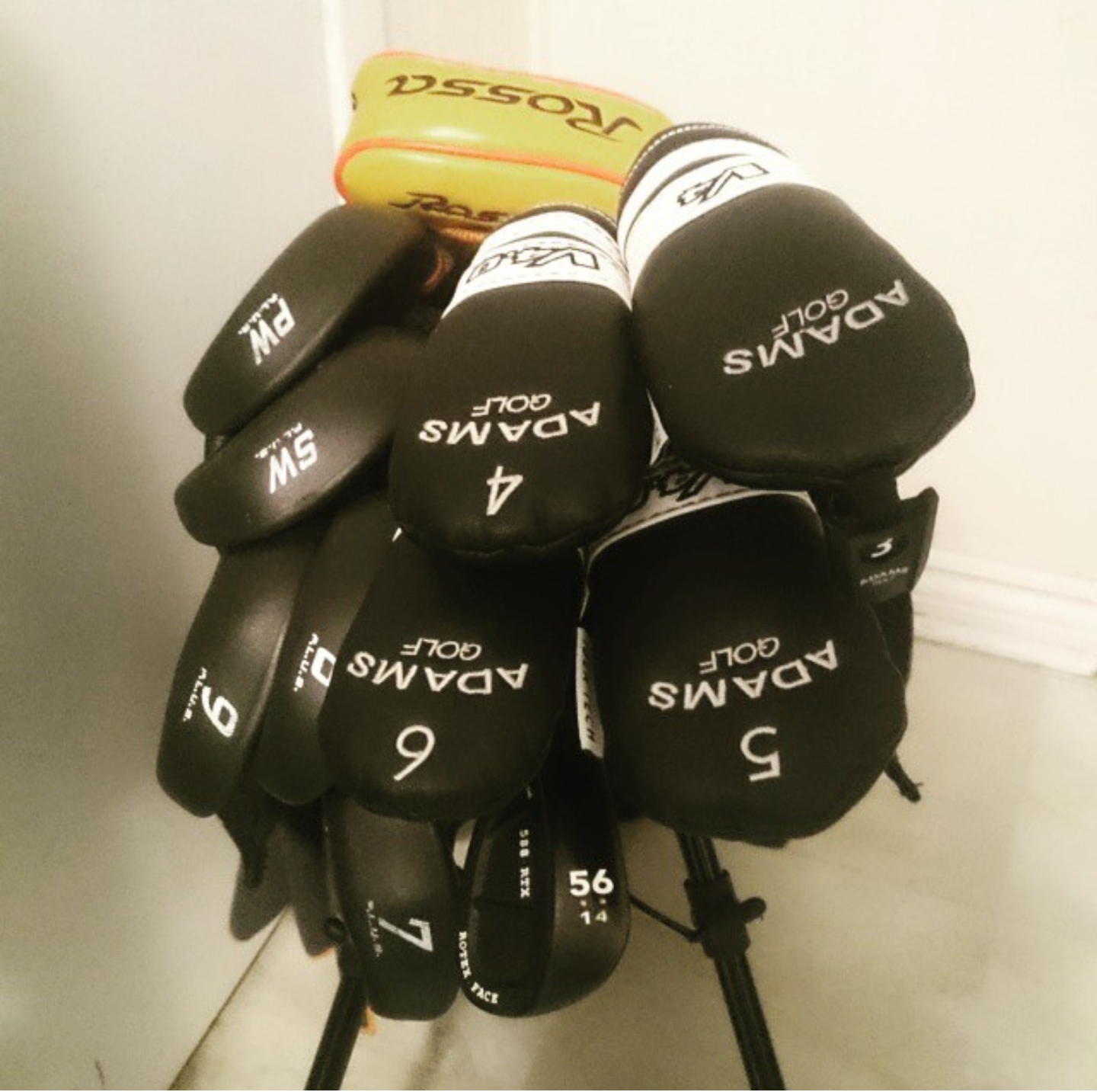A full month and counting
(Cobe Life has recently switched to a new Subscription service. I strongly advise current Subscribers to resubmit their follow request)
I’ve had the Giga Golf TRX Power Slot Irons with a standard length True Temper Feather Flight Firm shaft for just over a month now. As a resident of Toronto Ontario Canada, weather has prevented me from hitting them outdoors so all of my testing has been in simulators thus far. Although this is still a limited sample size in a very controlled environment. I’ve been able to make a few interesting conclusions.
Distance
I have tested many Super Game Improvement, and Game Improvement Irons over the last few years. This has provided me with a very good understanding of how far i can effectively hit a 7 Iron. Worst case scenario is around 138 yards, and my personal best average is 151 yards. The Giga Golf TRX Irons preformed admirably. My average distance with the TRX 7 Iron is 145 yards. Only 6 yards less than my personal best which was achieved with the Srixon Z355 7 Iron. It’s important to note that the Srixon 355 Irons set averaged out to $125/Iron, and the Giga Golf TRX Irons were only $50/Iron. Both Irons are 37 inches long, but the TRX 7 Iron has a one degree stronger loft at 30 degrees. Although peak heights during testing were the same. 6 yards might seem like a lot to some people, but provided your gapping is good the shorter total distance has very little affect on your game. Overall my distance with the Giga Golf TRX Irons is better than the majority of clubs I’ve tested.
Dispersion
In the grand scheme of things, dispersion is far more significant to me when evaluating Irons. My set includes 6 Iron down which for me act as my scoring clubs. I’m not the longest hitter so I leave myself a lot of 6 or 7 Iron approach shots into Greens. The tighter my shot dispersion is, the closer i am to the Pin on average. The Giga Golf TRX Irons have really shined in this area. My previous set of Irons were Super Game Improvement Irons from Adams. Although they were very easy to hit. Controlling the shot dispersion with those Irons wasn’t easy. With the Adams Idea Tech V4 7 Iron I had about an 18 yard dispersion. With the Giga Golf TRX 7 Iron I have an average total dispersion of only 9 yards. Reducing my average total dispersion by 50% can be the difference between a Green in Regulation, or landing in a Greenside bunker. To be honest I haven’t kept detailed records of the shot dispersions of all of the 7 Irons I’ve tested. I can tell you that the Giga Golf TRX 7 Iron shot dispersion is 3 yards better than what I achieved with the Srixon Z355 7 Iron though. Whether it’s as a result of the increased distance with the Srixon 7 Iron, or better face impact with the Giga Golf TRX 7 Iron I can’t be sure. For the time being I’m more than impressed with the Giga Golf TRX 7 Iron performance.
Forgiveness
As i mentioned earlier my previous set of Irons were the Adams Idea Tech V4 Super Game Improvement Irons. As such they were incredibly forgiving. Shots made from all over the club face travelled relatively far. My average total distance with the Adams Idea Tech V4 7 Iron was 140 yards. Impacts out of the toe were only about 4 yards shorter. Impacts out of the heel were only a touch worse averaging 6 yards shorter.
The Giga Golf TRX 7 Iron isn’t as forgiving. Shots out of the toe and heel are around 10 yards shorter. Practically a full club shorter for most golfers. Again this might sound terrible considering how many companies tout increased forgiveness as a feature. What you need to understand is that with increased forgiveness comes a decrease in feel. For the first time I’m able to notice when I’ve made poor contact. This has led to me developing a more consistent strike as a result. Although my suspicions haven’t been totally confirmed. I’m beginning to believe that Super Game Improvement Irons help you score better but don’t actually improve your game. Whereas Game Improvement Irons do exactly what their designation suggests. They actually do help to improve your game. I wouldn’t be surprised if after a full season playing with the Giga Golf TRX Irons that my center face strike consistency is significantly better.
Spin
Generally speaking Super Game Improvement Irons and Game Improvement Irons don’t spin at a high rate. Most manufacturers intentionally reduce the Spin in order to increase total distance. The only Game Improvement Irons I’ve tested that have affectively kept a high spin rate while offering increased distance are the Wilson C200s.
I was expecting the Giga Golf TRX 7 Iron to have a low spin rate due to it’s relatively strong loft of 30 degrees. If you have read my previous post on selecting the right Game Improvement Irons you’ll know that anything over 4500 rpm is considered high for me. I averaged 5200 rpm with the Giga Golf TRX 7 Iron. That’s an impressive result for me. My only explanation for the high spin results is the combination of lie, offset, and swing weight. I have a shallow swing path naturally but the TRX Power Slot Irons have a slightly more upright lie angle which has steepened my angle of attack to the ball. The increased Spin has limited the amount of roll out which is why my total distance is reduced. I’m sure it contributes to the smaller dispersion as well.
So far so good
It’s far too early to report on product durability so I’ll leave that for another time. Turf interaction will have to wait for warmer weather so that will come later as well. For what it’s worth though, if you play a lot of golf in a Simulator I would have a difficult time suggesting anything other than the Giga Golf TRX Power Slot Irons for the money. They perform as well as anything I’ve tested for a fraction of the price.
FOLLOW ME ON TWITTER
http://twitter.com/cobeness
FOLLOW ME ON INSTAGRAM
http://instagram.com/cobesports
FOLLOW ME ON FACEBOOK
http://www.facebook.com/cobelifegolf
